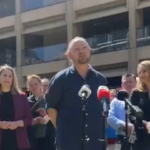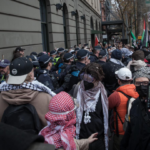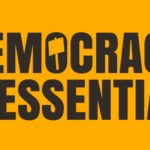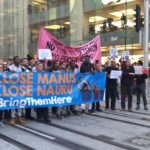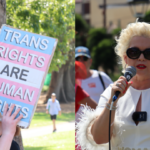NSW Government to Continue Anti-Protest Regime, Despite Public Opinion Being Against It
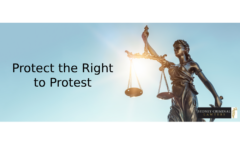
On 14 November 2024, the New South Wales government tabled its statutory review report into the controversial 2022 antiprotest regime, which was 43 days after it was required to be produced in law.
Transport for NSW (TfNSW) undertook the inquiry. It received 1,462 submissions, with only one of the authors supporting the continuation of the laws. The report then sets out that the government should keep the laws, and another review should take place in three years’ time.
The report considered the impact of the Roads and Crimes Legislation Amendment Bill 2022, which was passed on 1 April that year. The legislation created a provision so that a pre-existing law carrying 2 years imprisonment and/or a $22,000 fine for obstructing a bridge or tunnel be extended to cover roads, and the new criminal offence of obstructing a major facility was also enacted.
A provision requiring the statutory review was inserted into the Roads Act 1993 (NSW), under section 114H, that required the review of the roads and crime laws within 2 years of enactment, with an allocated 6 months to produce it. And the report authors further note that despite some of these laws appearing in the Crimes Act 1900 (NSW), the review would stick to the Roads Act amendments.
TfNSW found that two years after enactment, the laws continue to be valid, therefore, “no legislative changes are recommended”. However, the report makes two suggestions. The first is that a cross-party working group comprised of “key stakeholder agencies” should be established to monitor the laws, and as for ensuring that they remain above board, another review will take place in three years.
NSW Greens MLC Sue Higginson said in a 14 November statement that instead of coming to the table with reforms to the widely rejected laws, the government produced a bill to create more penalties in relation to the regime just two days prior to tabling the report, and she added that “the community should feel empowered” to partake in protest and not fear being locked up over it.
A most draconian endeavour
The offence of obstructing the Sydney Harbour Bridge, contrary to section 144G of the Roads Act, was already on the books when 2GB host Ben Fordham suggested to then roads minister Natalie Ward that more severe penalties should be passed in order to stamp out the rising nature and traction that then prevalent climate actions were garnering.
Ward appeared on the Fordham show on 14 March 2022. She complained that she’d been stuck in traffic on the Northshore’s Spit Bridge, which made her late to work that morning. The protest involved Fireproof Australia demonstrators blocking the traffic, while another group, Blockade Australia, had also been serving to up the protest ante in early 2022.
On 24 March, Ward then moved a bill to alter the Roads Regulation 2018 (NSW), so that the section 144G offence in the Roads Act also applies to all bridges and road tunnels in Greater Sydney. And this process was repeated on 1 April 2022, so that section 144G also applies to bridges and tunnels in the regional cities of Newcastle and Wollongong.
The Roads and Crimes Bill was introduced by now opposition leader Mark Speakman on 30 March 2022, and it passed two days later. The legislation created the crime of disrupting a major facility, under section 214A of the Crimes Act and it also inserted ‘roads’ into section 144G to broaden the offence scope. And all of these crimes carry penalties of 2 years inside and/or a $22,000 fine.
Another amendment to the Roads Regulation was produced on 5 April, which inserted new clause 48A into the legislation, which serves to define a “major road” within the section 144G offence as involving the obstruction of “a main road, a highway, a freeway, a tollway, or a bridge or tunnel that joins a main road, highway, freeway, or tollway”.
TfNSW advises in its report that it’s “estimated that protests of this nature, which cause significant disruption to the transport network, result in financial costs that run into the millions of dollars through direct economic loss and lost productivity”.
And “protests of this nature” refers to unapproved protests that involve organisers not having sought to inform the NSW police commissioner of the protest, meaning it is unauthorised. NSW has a system that involves demonstration organisers submitting a Form 1 to the top cop at least seven days prior to a planned protest action, so that NSW police officers can then monitor it.
The laws playing out
Since the changes to the section 144G offence, two crimes appear in it: the first involves blocking the Sydney Harbour Bridge and the second involves the prohibition on obstructing tunnels, bridges and roads.
The report explains that the new offence has been applied 39 times since enactment. Thirteen of these went on to became successful prosecutions. Twenty five of the cases were withdrawn by the prosecution and one was dismissed by the NSW Local Court, on the grounds of mental health or cognitive impairment.
The report then outlines that “in most instances the charge was withdrawn, and a guilty plea was entered to a lesser offence” of a pedestrian obstructing a driver’s or other pedestrian’s path’, under section 236 of the Road Rules. And the maximum penalty for this offence is a fine of $22,000, with no prison time applying.
“With respect to the changes that were made to the Roads Act,” the inquiry concludes, “the objective was to create greater deterrence to these incidents from continuing to occur by expanding the pre-existing offence provisions that applied to the Sydney Harbour Bridge and other major bridges and tunnels prescribed by the regulations, to also include major roads as prescribed.”
The document then recommends the stakeholder working group be established to consider the laws, while the next review should take place in three years from now.
However, two days prior to releasing its report that only explores one of the major two laws enacted on 1 April 2022, the Minns government introduced the Crimes Amendment (Obstructing a Railway) Bill 2024, which seeks to apply the antiprotest fine of $22,000 to the crime of obstructing a rail line, contrary to section 213 of the Crimes Act, as the offence only carries up to 2 years prison time.
The optics produced by this move, which came just one day after the NSW Council for Civil Liberties publicly called out NSW Labor on having long missed the deadline to produce its report, shows a community that’s calling for an end to the overreach of the 2022 antiprotest regime, whilst its government does not have an ear to the public, but rather it is to punish the community.
“The Greens fought against these laws in 2022, and this new expansion is something we are attempting to disallow in parliament today,” Higginson said last Thursday. “The community should feel empowered to engage in peaceful protests, even if it’s inconvenient for others – that’s sometimes the point or consequence of protest.”
“It is a shame that the NSW Labor Party is no longer a party that understands the importance of protests, strikes and other acts of political communication to the government,” the NSW Greens justice spokesperson said in conclusion.


